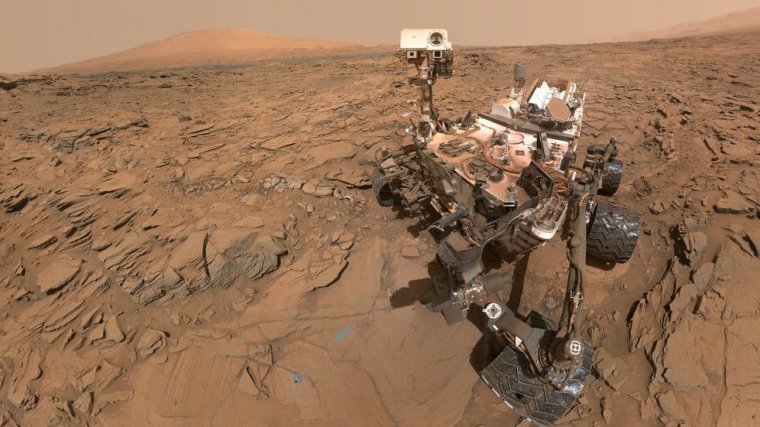| News / Space News |
NASA Weighs Use of Rover to Image Potential Mars Water Sites
NASA | JUNE 25, 2016
Curiosity Mars rover will continue to climb to progressively higher and younger strata on Mount Sharp, investigating how long the ancient, water-rich environments found so far persisted as Mars dried out. Reaching those destinations would bring the rover closer to locations where dark streaks are present on some slopes. On the way, the route would allow the one-ton rover to capture images of the potential water sites from miles away and see if any are the seasonally changing type.

This selfie of NASA's Curiosity Mars rover shows the vehicle at a drilled sample site called "Okoruso," on the "Naukluft Plateau" of lower Mount Sharp. ![]()
The features of interest have been observed by NASA’s High-Resolution Imaging Science Experiment (HiRISE) camera on the Mars Reconnaissance Orbiter (MRO). They appear as dark lines that appear to ebb and flow over time. Planetary scientists think these gullies or recurring slope lineae (RSLs) may appear seasonally as a form of briny water at or near the surface of the Red Planet under warmer conditions.
There are two RSL candidates that may be within Curiosity’s reach, on the side of the 3.1 mile (5 kilometer) Mount Sharp. The rover’s Remote Micro-Imager (part of ChemCam) would be the main instrument for imaging the possible sites. The goal would be to study the regions over time to see if there are any changes and to rule out other causes for the changes, such as dry avalanches.
How close could the rover safely get to an RSL? Kilometers away—it’s unlikely that it would be an issue. While the Martian environment is considered harsh for many organisms, that’s not necessarily the case for all of them—particularly microbes that might be hiding within the nooks and crannies of a robotic explorer.
The darkish streaks are considered “special regions” on Mars, where extra precautions must be taken to prevent contamination because of the suspected presence of liquid water, considered a prerequisite for life.
YOU MAY ALSO LIKE



